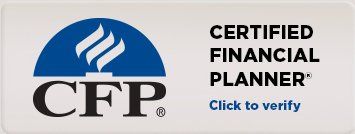How to Get a Home Loan: The Ultimate Guide
When it comes to buying a home, the biggest hurdle for many people is qualifying for personal loans. After all, lenders expect you to repay them with interest — and they won’t give you money unless they’re sure you can do that.
Limited funds, lack of credit history, or a previous bankruptcy are all things that could make it more difficult for you to get financing. That said, there are a variety of mortgage programs out there, and if you want to buy a home, now is the time. The following guide will help you understand how to get a home loan. Read on to get the details on how you can purchase your place and begin making those mortgage payments sooner rather than later.
What is a home loan and what are the different types available to you?
A home loan is simply a type of loan that helps you finance the purchase of a house. There are many different types of home loans available, each with its terms, conditions, and requirements.
Different Types of Home Loans
1. Bridging Loans
A bridging loan is a loan that is meant to help you in the time between selling your old home and buying a new one. It's technically another home loan that you take out on top of the one you already have. You get extra money to help you buy a second home while the first one is on the market. During the "bridging period," you have two loans and usually only pay the interest on one of them. When your current home sells, the bridging loan is added to the loan you choose for your new home.
Most of the time, a bridging home loan is only for up to 12 months, and it usually has higher interest rates than a standard home loan.
2. Construction Loans
Construction loans are offered to people who are building a new house. The credit provider will provide you with the amount you need to complete the project. You will repay them in instalments and have the option to pay off the loan early if you’re in a position to do so. Construction loans are usually given as unsecured loans with a variable interest rate and fixed repayment term. You may also be required to pay an upfront fee when you apply for a construction loan. These payments are typically made in five to six stages, which are as follows:
- Deposit - Payment made to the builder to begin construction
- Base - Completed concrete slab or footings
- Frame - Complete and approve the house frame
- Lockup - Consists of windows or doors, roofing, brickwork, and insulation.
- Fixing - Plastering, kitchen cabinets, appliances, bathroom, toilet, laundry fittings/tiling, etc.
- Completion - Fencing, site clean-up, and final pay to builder
3. Guarantor Loans
A home loan with a guarantor is not a specific product. There are home loans that let you use a guarantor. A guarantor is someone (usually a close relative like a parent) who agrees to pay your loan back if you can't. People with low incomes or having trouble saving up for a deposit can benefit from having a guarantor because some lenders let guarantor-backed customers get a home loan with no down payment.
4. Investment Home Loans
As the name suggests, an investment home loan is a loan taken out to buy a property that will be used as an investment, rather than a place to live. Investment home loans typically have higher interest rates and monthly fees than owner-occupier loans.
The Australian Taxation Office (ATO) states that interest payments (among other things) can be assumed as a tax deduction if you take out an investment home loan.
5. Line of Credit Loans
A line of credit loan, also known as a home equity loan, lets you borrow money against the equity in your home. This type of loan gives you access to a line of credit that can be used for anything from renovations to investment properties.
Lines of credit could be used for a variety of purposes, including:
- Home improvements and repairs
- Purchasing a Second House
- Purchasing a Vehicle
- Taking a vacation
- Paying for a wedding, etc.
6. Low-doc Home Loans
A low-doc home loan is a type of loan available to people who may not have the traditional employment history or income documentation required by lenders.
Low-doc loans are typically available to:
- Self-employed people
- People with multiple jobs
- People with irregular incomes
- People who get paid in cash
7. Owner-occupier Home Loans
If you’re looking to buy a home to live in, you’ll need to apply for an owner-occupier home loan. To qualify for this type of loan, you’ll need to have a good credit score and a steady income.
Owner-occupier home loans often have a lower interest rates than investment loans, and you’ll generally be able to borrow a larger amount of money.
8. Refinance Home Loans
If you already have a home mortgage and want to switch to a different lender or change the terms of your loan, you can apply for a refinance home loan.
To qualify for a refinance home loan, you’ll need to have equity in your property. Equity is the portion of your property that you own outright or the portion you’ve paid off.
For example, if your property is worth $500,000 and you have a loan outstanding of $400,000, you have $100,000 in equity.
You can use this equity to refinance your home mortgage by borrowing against it. This will give you access to a new loan with different terms, such as a lower interest rate or a different repayment period.
9. Reverse Mortgages
A reverse mortgage is a type of home loan that allows you to borrow money against the equity in your property, without having to make any repayments.
Reverse mortgages are usually available to people over the age of 60, and they can be used for things like home repairs or renovations, medical expenses, or everyday living costs.
To qualify for a reverse mortgage, you’ll need to have equity in your home.
How is the home loan application process?
The home loan application process can be lengthy, but it is not overly complicated. It will usually entail the following steps:
- Gathering the necessary documents
- Comparing mortgage providers
- The lender's preliminary evaluation
- Making an application to the lender
- A property valuation is completed by the lender.
- Loan approval or rejection by the lender.
- They make you an offer.
- The loan has been settled, and the funds have been advanced to you.
Getting Pre-Approved
Documents for Pre-Approval
Pre-approval for a home loan allows you to borrow up a certain amount, providing you a decent idea of something that you can and cannot afford. The following documents are required for home loan pre-approval:
- Proof of income (pay slips, tax returns etc.)
- Bank statements and proof of savings
- List of your current assets and liabilities (e.g. credit card and personal loan debt)
- 100 points of ID (driver’s license, passport, Medicare card etc.)
Although obtaining pre-approval does not guarantee that you will be approved for a home loan, it can help you save time and money by avoiding the hassle of applying again.
How long is a mortgage pre-approval good for?
Most traditional lenders offer mortgage pre-approval, also known as conditional approval, for three to six months. They don't like to do pre-approvals for any longer than this because people's financial situation, as well as the property market, can change.
Pre-approval for a loan amount can give a good idea of your borrowing power, which can speed up the application process.
How much of a mortgage can you get?
Technically, there is no limit on how much individuals can borrow for a home mortgage, but how much you can borrow depends on the following factors:
- annual pre-tax annual salary
- other regular earnings you receive (rental income, second jobs, etc.)
- monthly living expenses
- regular loan and credit repayments
- financial history
- total number of dependents
- marital status
- type of mortgage (owner-occupier, investor etc.)
- length of your mortgage
Common Mortgage Requirements
Applying for a home mortgage can be a time-consuming process, but you can shorten it by knowing what you'll need ahead of time:
- how much deposit for the house (at least 5%)
- credit history
- steady income
- lack of debts
- photo IDs (drivers licence, passport, etc.)
- bank statements and payslips
- council rates of any of your properties
Lenders mortgage insurance (LMI) is insurance policy that protects the lender in the event that you default on your loan. It is required if you are borrowing more than 80% of the property value.
Factors that Lenders Consider in a Home Loan Application
The lender will consider the following factors when reviewing your application:
Income and Employment
Lenders will want to know that you have a steady and sufficient income. They’ll want to see at least two years of your recent income tax returns. This is to ensure that you can make your monthly payments, and it also shows the lender that you haven’t taken on too much debt.
Credit Score
Your credit score will be one of the major factors in your home loan application. Lenders use credit scores to measure your financial responsibility, so if you have a high credit score, it means you are less likely to default on the loan. The higher your credit score, the better chances you have of getting approved for a home loan with a lower interest rate.
Credit History
Along with your credit score, lenders will also look at how much debt you currently owe and how long you have mortgage repayments. If there is little or no existing debt, this can show lenders that you are responsible with money and can handle additional financial obligations like a mortgage payment.
Spending Habits
How you spend your money also plays a role in the lender’s decision to approve you for a home loan. Suppose you have been living within your means and are currently making ends meet with your current income. In that case, this can show lenders that you are financially responsible and will be able to handle the additional financial obligations of a home loan.
Length of Employment
Lenders want to see that you have been working at your current job for at least two years before approving you for a home loan. This shows them that you are reliable and dependable, which is important in managing a home mortgage payment. They want to ensure that you can make your payments each month as scheduled.
Debt-to-income Ratio
The debt-to-income ratio is the percentage of your gross monthly income toward paying all your debts, including mortgage payments. The higher this ratio is, the more likely you will be approved for a home loan with a lower interest rate. This ratio is calculated by dividing your total monthly debt payments by your gross monthly income. Lenders like to see at least 35% or less of your gross monthly income going toward all debts and bills, including housing costs.
Assets and Liabilities
Lenders want to know that you have enough assets to pay for the home loan. This can be done by simply looking at your monthly income. The more money you make each month, the more likely you will be approved for a home loan.
The lender will also check your liabilities and the total amount of debt you owe. They want to ensure that your liabilities are lower than your assets and income so that you can afford the additional financial obligation of a home mortgage payment each month.
Tips for People with Bad Credit History
If you have a bad credit history, there are still options available to you to get a home mortgage.
Here are some tips:
Save up for a larger down payment: A larger down payment will show the lender that you are serious about buying a property and that you have the
financial ability to do so.
Look into alternative lenders: There are many alternative lenders who may be willing to work with you even if you have bad credit.
Fix any errors on your credit report: Be sure to check your credit report for any errors and dispute them if necessary.
Improve your credit score: You can improve your credit score by making all of your payments on time, keeping your balances low, and using less than 30% of your credit
Consider a co-signer: If you have someone with good credit who is willing to co-sign your loan, this may improve your chances of getting approved.
Get Professional Advice
If you're having trouble getting a home loan, it's important to get professional advice. A mortgage broker can help you find the right lender and get the best possible rate.
Enigma Financial Planning is here to help you through the process of finding and securing a home loan, even if you have a bad credit history. We will work with you to find the best possible rate and terms for your financial situation. Contact us today to get started.




